Abstract
African American women are at high risk for morbidity and mortality from breast cancer. African American women ages 50 and older have been a difficult group to reach through conventional breast cancer intervention programs. Cultural and health beliefs that differ from mainstream society are reported to be factors contributing to the low rates of breast screening among this group. In addition to these attitudinal factors, older African American women are disproportionately represented among uninsured and under-insured Americans. As a result, cost becomes a barrier to mammography screening for many of these women. This project proposes to increase breast cancer screening awareness and provide a referral or free breast screening, or both, for African American women ages 50 and older. This information will be offered in the culturally familiar setting of local beauty salons. The culturally sensitive educational pamphlets developed by the National Cancer Institute (NCI) and video developed by the NCI-funded project, Cancer Prevention Research Unit, will be used to promote mammography, clinical breast examinations, and breast self-examination. Providers staffing a mobile mammography van provided by Dr. Anitha Mitchell of the Association of Black Women Physicians through a grant from the Breast and Cervical Cancer Control Program, funded by the Centers for Disease Control and Prevention, will perform mammograms for women on site during scheduled intervals. A followup telephone survey will be conducted.
Full text
PDF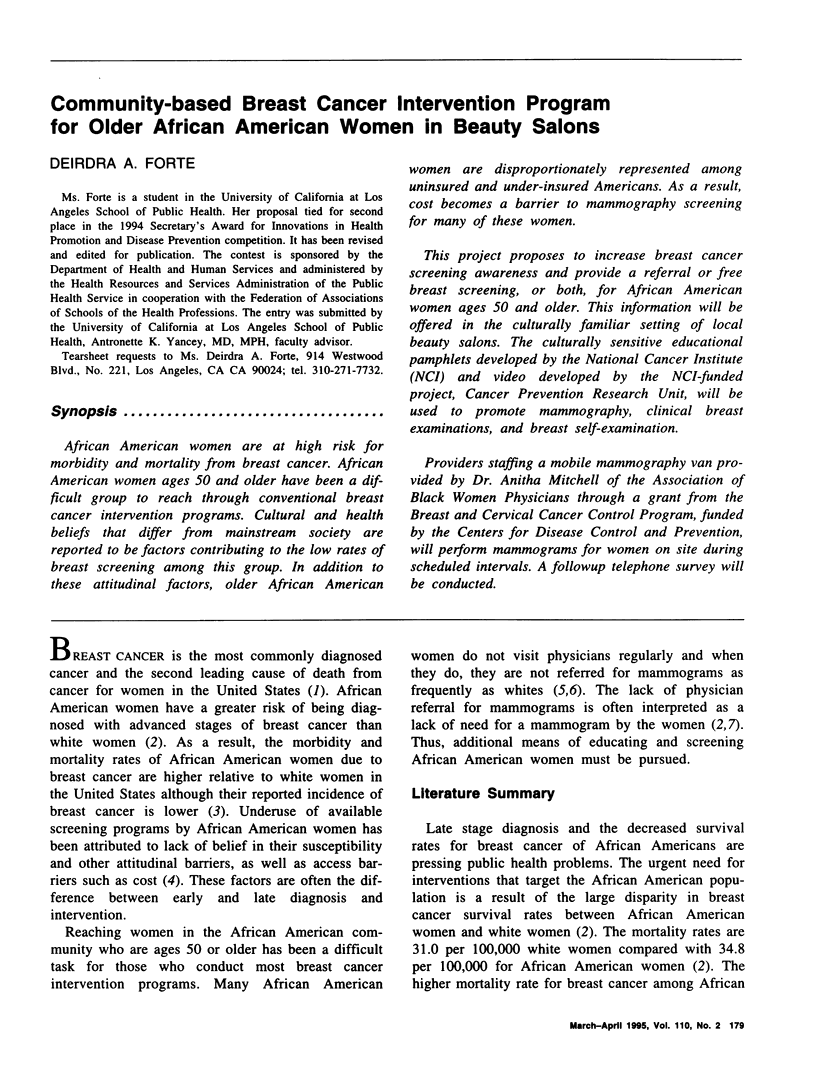
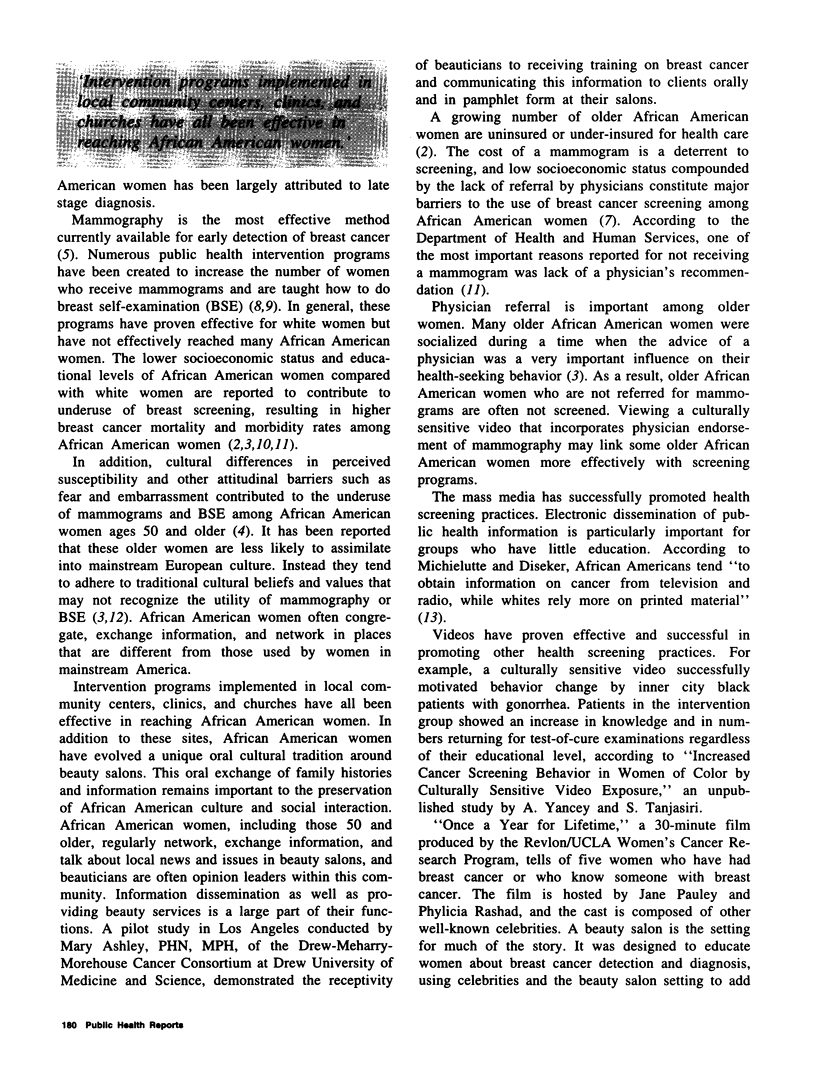
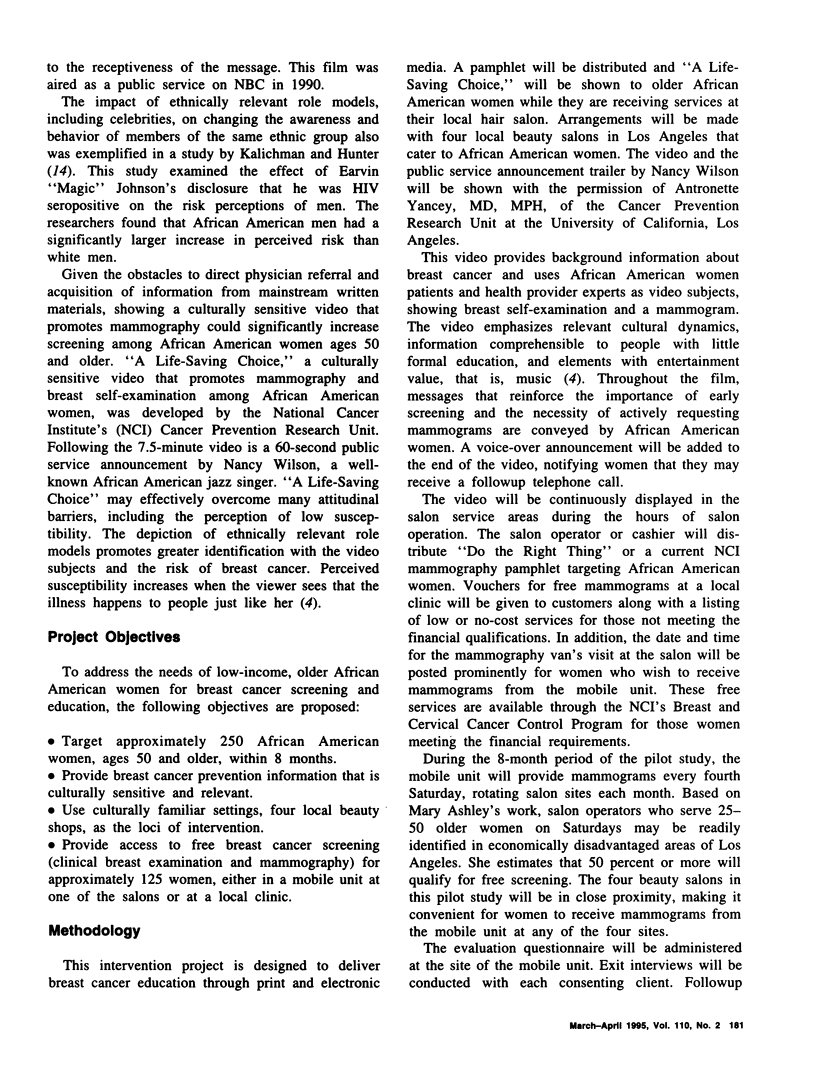
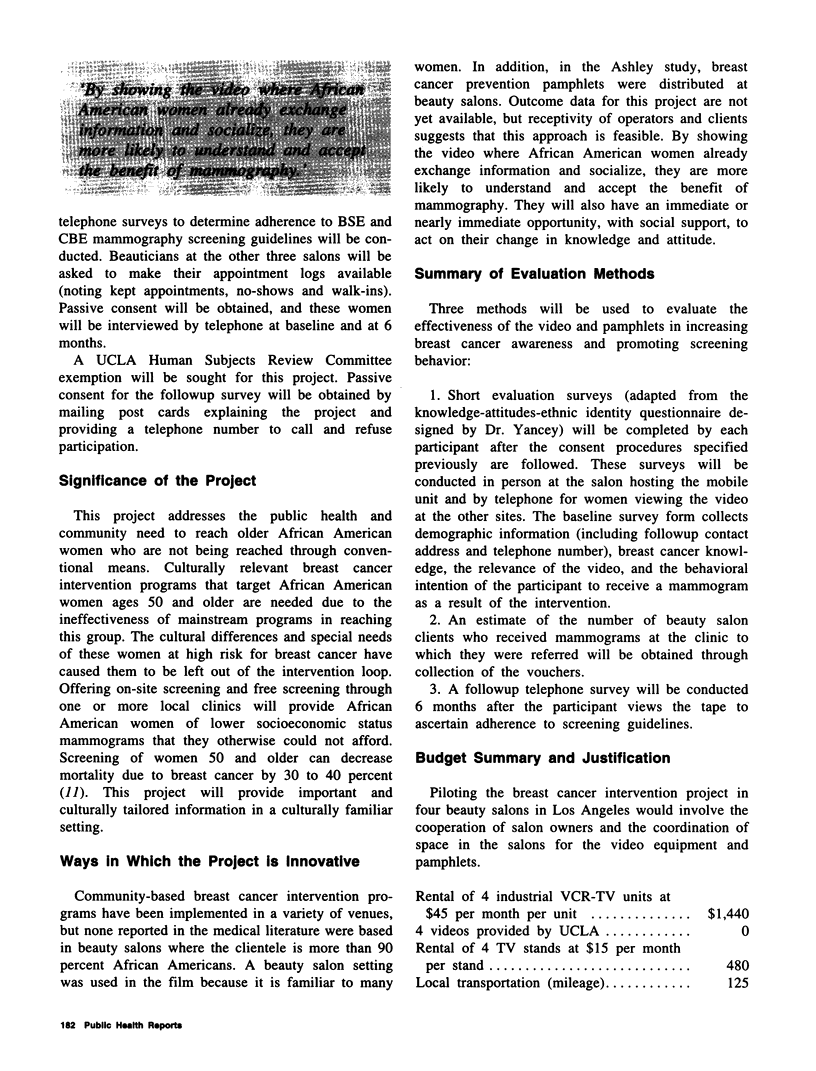
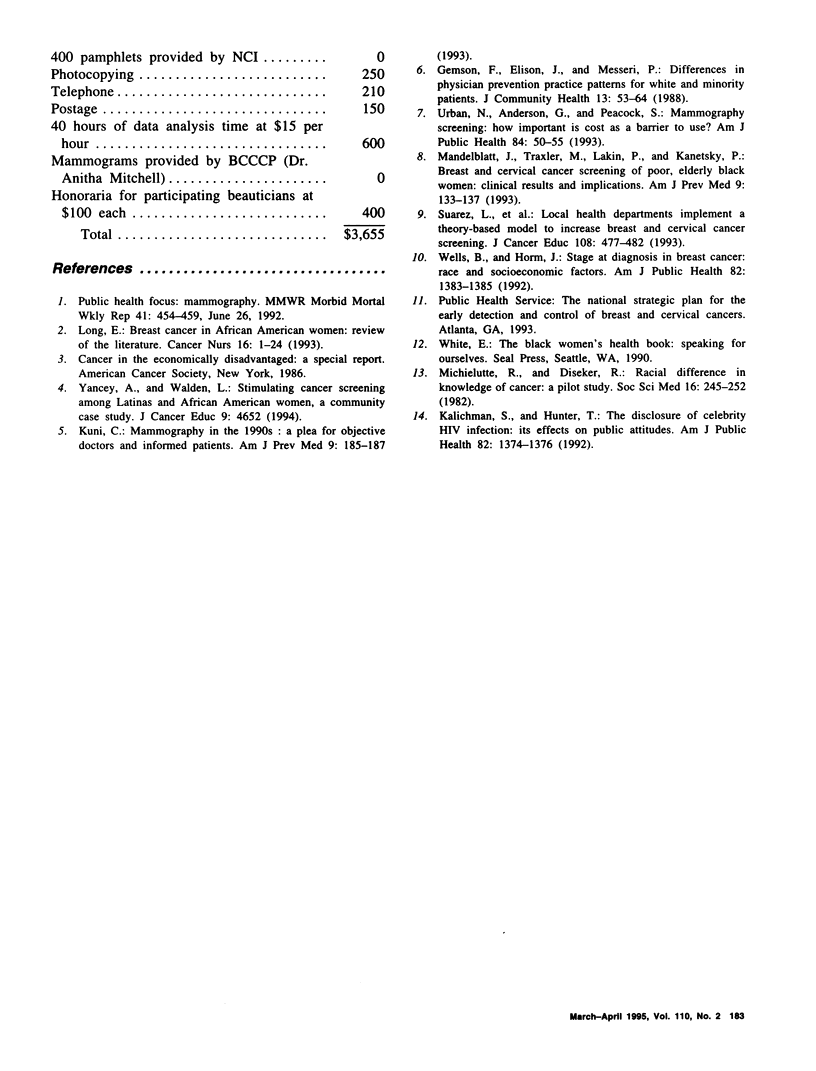
Selected References
These references are in PubMed. This may not be the complete list of references from this article.
- Gemson D. H., Elinson J., Messeri P. Differences in physician prevention practice patterns for white and minority patients. J Community Health. 1988 Spring;13(1):53–64. doi: 10.1007/BF01321480. [DOI] [PubMed] [Google Scholar]
- Kalichman S. C., Hunter T. L. The disclosure of celebrity HIV infection: its effects on public attitudes. Am J Public Health. 1992 Oct;82(10):1374–1376. doi: 10.2105/ajph.82.10.1374. [DOI] [PMC free article] [PubMed] [Google Scholar]
- Kuni C. C. Mammography in the 1990s: a plea for objective doctors and informed patients. Am J Prev Med. 1993 May-Jun;9(3):185–190. [PubMed] [Google Scholar]
- Long E. Breast cancer in African-American women. Review of the literature. Cancer Nurs. 1993 Feb;16(1):1–24. [PubMed] [Google Scholar]
- Mandelblatt J., Traxler M., Lakin P., Kanetsky P., Thomas L., Chauhan P., Matseoane S., Ramsey E. Breast and cervical cancer screening of poor, elderly, black women: clinical results and implications. Harlem Study Team. Am J Prev Med. 1993 May-Jun;9(3):133–138. [PubMed] [Google Scholar]
- Michielutte R., Diseker R. A. Racial differences in knowledge of cancer: a pilot study. Soc Sci Med. 1982;16(3):245–252. doi: 10.1016/0277-9536(82)90335-5. [DOI] [PubMed] [Google Scholar]
- Suarez L., Nichols D. C., Pulley L., Brady C. A., McAlister A. Local health departments implement a theory-based model to increase breast and cervical cancer screening. Public Health Rep. 1993 Jul-Aug;108(4):477–482. [PMC free article] [PubMed] [Google Scholar]
- Urban N., Anderson G. L., Peacock S. Mammography screening: how important is cost as a barrier to use? Am J Public Health. 1994 Jan;84(1):50–55. doi: 10.2105/ajph.84.1.50. [DOI] [PMC free article] [PubMed] [Google Scholar]
- Wells B. L., Horm J. W. Stage at diagnosis in breast cancer: race and socioeconomic factors. Am J Public Health. 1992 Oct;82(10):1383–1385. doi: 10.2105/ajph.82.10.1383. [DOI] [PMC free article] [PubMed] [Google Scholar]


